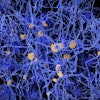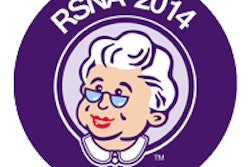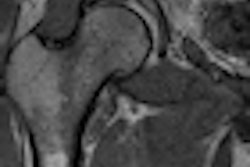VIENNA - MRI evaluation of a group of karate fighters has found a high rate of femoroacetabular impingement, according to research from the University of Bern in Switzerland.
"And the main barometer for an increased [hip ball] alpha angle and severity of lesions is the [fighter's] age at start of training," said Dr. Inge Kress. She presented the research during a scientific session Saturday at the 2009 European Congress of Radiology (ECR).
Recent research has found that athletes who participate in intensive sports activities have a higher rate of hip osteoarthritis than the general population, and they also have an earlier onset of the disease. In addition, a correlation has been found between early onset osteoarthritis and femoroacetabular impingement, she said.
With that in mind, the Bern researchers sought to examine with MRI the morphological changes of the hip joints of a group of karate fighters and to investigate the influence of karate training on developmental osteoarthritis. The study team evaluated a total of 97 hips in 50 karate fighters.
Each fighter received their MR scan on a Trio 3-tesla scanner (Siemens Healthcare, Erlangen, Germany). T1-weighted 3D gradient-recalled echo (GRE) and T2-weighted 3D true-FISP sequences were used.
Two observers then graded the shape of the femoral head of the acetabulum, the morphology of the labrum, and the integrity of the cartilage. The fighters also received a clinical examination that included impingement and range of motion tests.
The researchers found that internal rotation was decreased in 42 hips (43%), and an increased alpha angle was found in 72% of the hips. The mean alpha angle in these hips was 64.3°; an angle greater than 55° is considered abnormal. The labrum was normal in 16 hips (16.5%), degenerated in 48 hips (49.5%), and torn in 33 hips (34%).
Cartilage was normal in 14 hips (15%) and degenerated in 78 hips (78%), Kress said. Full-thickness defects were present in six hips (7%).
MRI signs indicating stress between the acetabular and the femoral component of the hip joint included herniation pits, cysts at the acetabular rim, and myoid degeneration of the superior to posterior region of the joint, she said.
The researchers found that the age of the fighter did not correlate with findings of hip damage.
"But the more years of karate training, the more labral lesions and the more cartilage damage was found," she said. "And the earlier the athlete started the training, the higher was the prevalence of an increased alpha angle, labral lesions, and cartilage damage."
By Erik L. Ridley
AuntMinnie.com staff writer
March 7, 2009
Related Reading
Physicians less likely to discuss joint replacement with older patients, January 22, 2009
Greatest pain comes four hours after MR arthrogram injection, December 26, 2008
MR arthrography outdoes 3-tesla MR on tendon tears, December 12, 2008
MR arthrography study finds 'optimal injection site,' October 24, 2008
MRI keeps pace with rapidly evolving musculoskeletal systems of young athletes, May 20, 2007
Copyright © 2009 AuntMinnie.com



.fFmgij6Hin.png?auto=compress%2Cformat&fit=crop&h=100&q=70&w=100)





.fFmgij6Hin.png?auto=compress%2Cformat&fit=crop&h=167&q=70&w=250)











